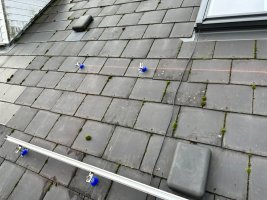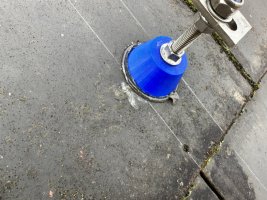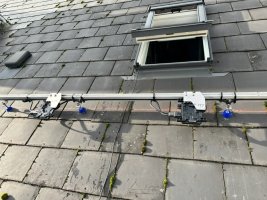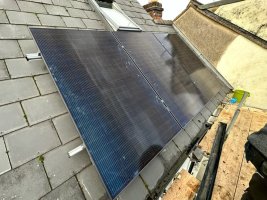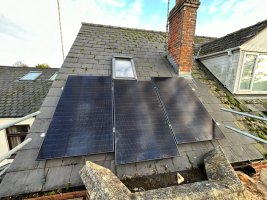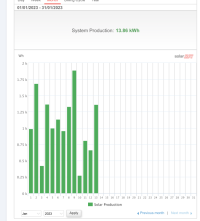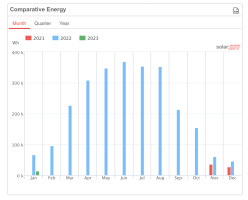I'm pleased I found this thread!
I had a salesman round this afternoon who recommended a 6.4 kW system with 2 x 3.3 kw batteries. Around £12k all in. Not bad.
The arrays will be split with 2.4kw facing East, and 4kw, West.
I've worked out my house uses about 17kwh a day, on average. I reckon I'd produce about 21kwh a day, giving me 4 kwh spare, so 6.6 kwh of batteries is too much.
Calculations below:
A 6.4kw system
= 6400 Watts per Hour
× 5.4 (average hours of sun per day)
=34, 560 x 0.77 (derating)
=26, 611 x 0.8 ( E/W facing)
= 21, 289
=21.3 kwh - 17kwh = 4kwh
4kwh spare to charge a 3.3 kW battery.
In theory, I can produce all the electricity I need with a battery to run the house through the night. Break even point would be about 4 years on today's prices.
I have two niggling doubts here about it:
1) Producing all the electricity my house needs seems to good to be true!
2) My Dad has a 4kw system, and battery, with the original FiT, but reckons it's not worth it without FiT, as his bill is the same!? As he's a recently retired Electrical Engineer, I tend to trust his judgement on this, although I can't understand how!
Anyone had similar experiences to my Dad?
Or, want to point out something obvious I've missed?

